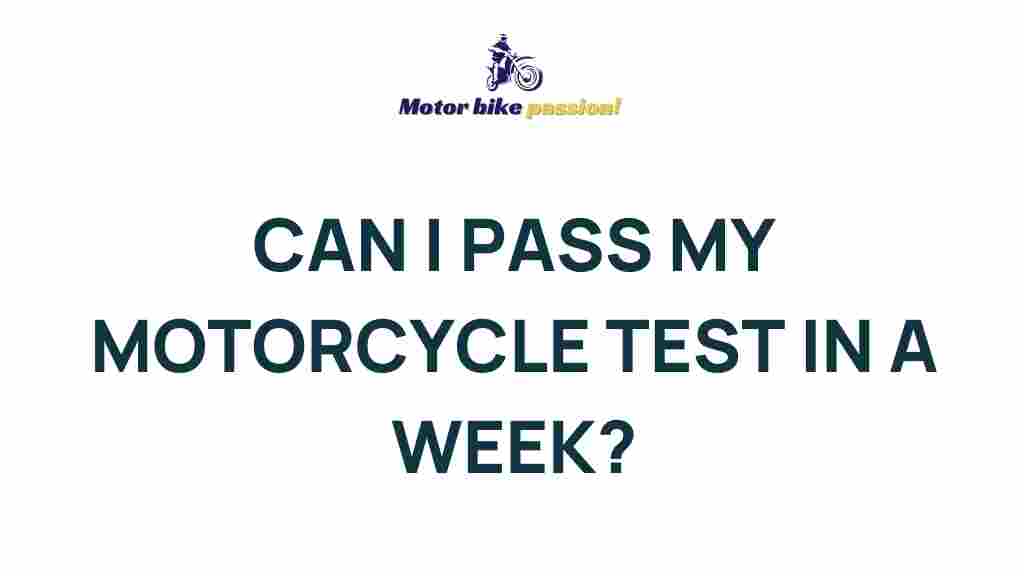Mastering the Motorcycle Test: Secrets to Success
Getting your motorcycle license is an exciting step towards freedom on the open road. However, passing the motorcycle test can be a challenging task without the right preparation. In this comprehensive guide, we will explore effective tips, strategies, and study techniques to help you pass your motorcycle exam with flying colors. Whether you’re a first-time rider or looking to upgrade your skills, our tips will ensure you are well-prepared for your motorcycle test.
Understanding the Motorcycle Test
The motorcycle test typically consists of two parts: a written exam and a practical skills test. The written exam assesses your knowledge of traffic laws, motorcycle operation, and safe riding practices. The practical test evaluates your riding skills and ability to handle a motorcycle in various situations.
Step-by-Step Preparation for the Motorcycle Test
Preparation is key to passing your motorcycle test. Follow these steps to ensure you are ready for both the written and practical components:
1. Study the Manual
- Obtain your state’s motorcycle handbook or manual.
- Read through the entire manual to familiarize yourself with motorcycle laws and safety tips.
- Take notes on key points that you find challenging.
2. Take a Motorcycle Safety Course
Enroll in a motorcycle safety course. These courses offer invaluable hands-on training and often provide a waiver for the skills test. Benefits include:
- Professional instruction on safe riding practices.
- Opportunities to practice essential skills in a controlled environment.
- Increased confidence in your abilities.
3. Practice Riding Skills
Practice is crucial for mastering the practical portion of the motorcycle test. Focus on the following skills:
- Starting and stopping smoothly.
- Making tight turns and lane changes.
- Executing emergency stops and swerves.
- Controlling speed and maintaining balance.
4. Take Practice Tests
To prepare for the written exam, take online practice tests. These tests can help you gauge your knowledge and identify areas that need improvement. Here are some online resources:
- Motorcycle Safety Foundation – Offers practice quizzes and resources.
- State DMV websites often provide sample questions and study tools.
Effective Study Tips
Here are some effective study tips to help you retain information and prepare for the motorcycle test:
- **Create a Study Schedule**: Allocate specific times for studying to ensure you cover all material before the test.
- **Use Flashcards**: Create flashcards for important terms and concepts to reinforce your memory.
- **Join a Study Group**: Collaborate with other learners to discuss and quiz each other on key topics.
- **Practice Visualizing Scenarios**: Imagine different riding scenarios you might encounter and how you would respond.
Strategies for Passing the Practical Exam
The practical exam tests your ability to operate a motorcycle safely and effectively. Use these strategies to ace the test:
1. Arrive Prepared
On the day of the test, ensure your motorcycle is in good working condition. Check the following:
- Tire pressure and tread depth
- Brakes and lights
- Fluid levels (oil, coolant)
2. Dress Appropriately
Wear protective gear including a helmet, gloves, jacket, long pants, and sturdy boots. Not only does this gear keep you safe, but it demonstrates your commitment to safe riding practices.
3. Follow Instructions Carefully
Listen closely to the examiner’s instructions. If you don’t understand something, don’t hesitate to ask for clarification.
4. Stay Calm and Focused
Test anxiety is common, but staying calm will help you think clearly and perform better. Take deep breaths and focus on your riding.
Troubleshooting Common Issues
Even with thorough preparation, you may encounter challenges. Here are some common issues and how to handle them:
1. Nervousness
Feeling nervous is normal. To combat this, practice relaxation techniques such as deep breathing or visualization. Remind yourself of your preparation and skills.
2. Mistakes During the Test
If you make a mistake during the practical test, don’t panic. Stay composed and continue the test to the best of your ability. Remember, everyone makes mistakes.
3. Weather Conditions
Inclement weather can affect your performance. If you are uncomfortable riding in certain conditions, discuss with your examiner the possibility of rescheduling the test.
Conclusion: Your Path to Success
Passing the motorcycle test is a significant milestone on your journey to becoming a licensed rider. By following the tips and strategies outlined in this guide, you will be well-prepared to tackle both the written and practical components of the exam. Remember to study diligently, practice regularly, and stay calm on test day. With commitment and effort, you will master the motorcycle test and enjoy the freedom of the open road.
For more information on motorcycle safety and training, check out the Motorcycle Safety Foundation.
Good luck, and ride safely!
This article is in the category Basic Guides and created by MotorBikePassion Team
